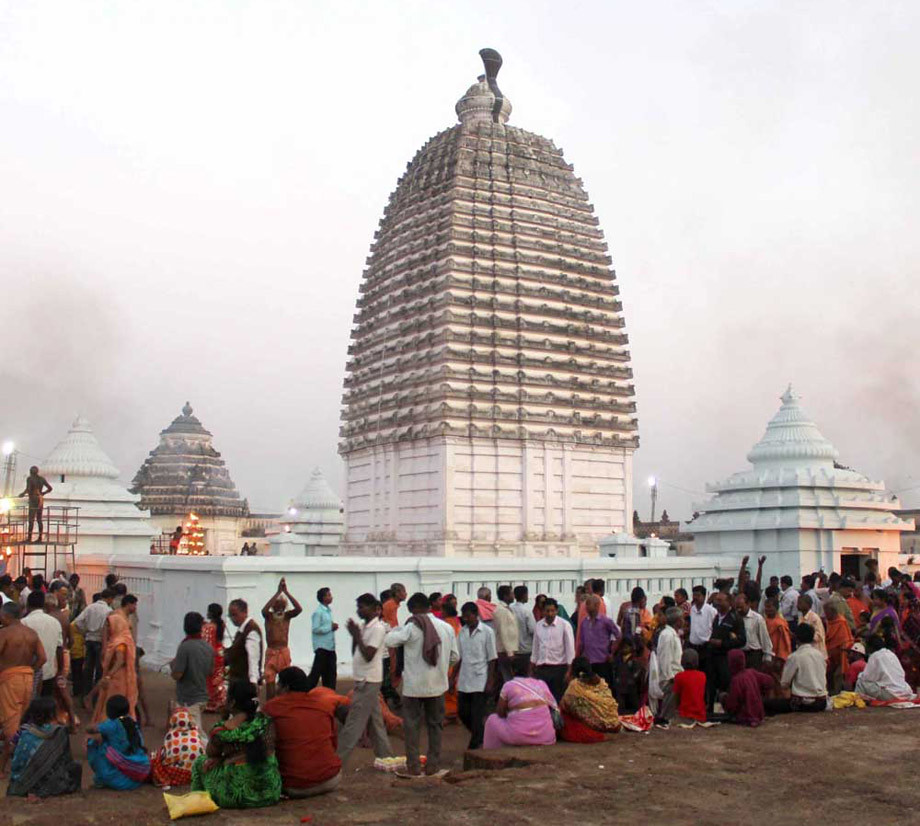The festival of Mahima religion, known as the Joranda Sadhu Festival, is a unique and colorful event that takes place annually in Joranda, near Dhenkanal in the state of Odisha, India. This festival is dedicated to the worship of the Supreme Sadhus, who are holy men known for their austere and ascetic lifestyle. The highlight of the festival is the worship of the Supreme Sadhus, also known as the Bakala Dhari, who wear only two pieces of tree bark to cover their private parts and meditate in their monastery surrounded by a 12-foot holy fire. The festival attracts thousands of visitors and devotees from across the state and offers a glimpse into the rich cultural and spiritual heritage of Odisha.

The Joranda Sadhu Festival is a unique opportunity to witness the rituals and customs of the Mahima religion up close. The festival is divided into three groups of Sadhus – the Gruha Tyagi (Primary), the Kaupani Dhari (Secondary), and the Bakala Dhari (Supreme). The Gruha Tyagi are the students in the preliminary stage who meditate and dedicate themselves to the Mahima religion. They wear saffron-colored clothes and two pieces of cotton cloth. After 12 years of dedication, the committee decides to promote them to the Kaupani Dhari, who wear saffron-colored lean cloth tied by organic rope around their waist to cover only their lower private parts. Finally, after another 12 years of dedication, the Kaupani Dhari are promoted to the Bakala Dhari, who leave all cotton cloth and wear only two pieces of tree bark (locally known as “Kumbhi”) to cover their private parts. They also have long matted hair, often more than 2 meters long.
Joranda Sadhu Festival
The festival takes place at the Joranda Monastery, which is located 25 km from Dhenkanal and 100 km from Bhubaneswar, the capital of Odisha. The nearest airport is Bhubaneswar, which is a 2.5-hour drive from Joranda, and the nearest railway station is Dhenkanal, which is a 45-minute drive away. The festival is open to all and entry tickets are free. Photography is allowed inside the monasteries, except for the treasury monastery.
The festival offers a unique experience for tourists and travelers to witness the rituals and customs of the Mahima religion and interact with the Supreme Sadhus. The itinerary for the Joranda Sadhu Festival can be customized as per the duration of the tour, but a suggested 14-night/15-day itinerary can cover the most colorful aspects of the festival as well as other attractions in Odisha.
After arriving at Bhubaneswar, the capital of Odisha, the nearest airport to Joranda, you can embark on a fascinating journey to experience the Mahima religion Sadhu festival. The drive from Bhubaneswar to Joranda is approximately 100 km and takes around 2.5 hours by car.
As you leave the bustling city behind, you’ll find yourself immersed in the picturesque countryside of Odisha. The drive takes you through scenic landscapes, passing through villages and towns, and providing glimpses of rural life in this part of India. The route is well-connected and well-maintained, making for a comfortable and enjoyable drive.
As you approach Joranda, you’ll start seeing signs of the festival. Devotees dressed in saffron-colored clothes, holy men clad in tree bark, and the spiritual aura of the place will captivate your senses. The festival takes place in the Joranda monastery, which is located about 25 km from Dhenkanal, a small town in Odisha.
The Joranda monastery is the abode of the Bakala Dhari, the Supreme Sadhus of the Mahima religion. These revered holy men are the epitome of renunciation and spirituality, having devoted their lives to meditation and self-realization. They are known for their unique practice of wearing only two pieces of tree bark, called “Kumbhi”, as clothing to cover their bodies, and letting their hair grow to more than 2 meters in length.

The highlight of the festival is the worship of the 12 feet holy fire stand, which is considered the best way to attain world peace and harmony. The Supreme Sadhus perform elaborate rituals and offer prayers to the sacred fire, invoking blessings for all beings. The atmosphere is charged with devotion, and the spiritual energy of the place is palpable.
The festival also offers an opportunity to witness the different stages of the Sadhus’ spiritual journey. The Gruha Tyagi, or the primary Sadhus, are the students in the preliminary stage who wear saffron-colored clothes and two pieces of cotton cloth. The Kaupani Dhari, or the secondary Sadhus, have completed 12 years of dedication and wear lean cloth tied by organic rope around their waist to cover their lower private parts. And finally, the Bakala Dhari, or the Supreme Sadhus, who have completed 12 years of discipleship and wear only two pieces of tree bark as clothing.
Apart from the religious aspect, the festival also offers a unique cultural experience. You can witness traditional dance performances, music, and other cultural programs that showcase the rich heritage of Odisha. The colorful attires, traditional instruments, and rhythmic beats of the drums create a vibrant ambiance, adding to the overall festive spirit of the event.
As you explore the festival, you can also interact with the Sadhus and learn about their way of life, their philosophy, and their spiritual practices. They are known for their wisdom and deep insights into the mysteries of existence, and engaging in meaningful conversations with them can be a truly enriching experience.
In addition to the festival, you can also explore the surrounding areas of Joranda, which are known for their natural beauty and tribal culture. Odisha is home to many indigenous tribes, and visiting their villages can provide you with a glimpse into their unique way of life, customs, and traditions. You can witness their art and craft, taste local cuisine, and learn about their folktales and myths, which are passed down through generations.
You can also visit nearby attractions such as the Dhenkanal Palace, which is a beautiful heritage building that reflects the grandeur of the bygone era. The palace is now converted into a museum, showcasing the rich history and culture of the region.
Tour itinerary / duration: 14 Night / 15 Days (weekend to weekend)- or as your choice Contact Us

